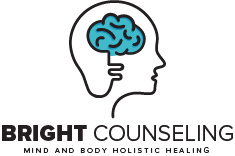We offer a brain-based approach to mental health because yes, to answer the question, your brain activity is very much a part of your mental health.
Our neurofeedback treatment program starts with creating a map of your brain using scalp sensors that measure your brain’s electrical activity, or the brain waves between your neurons. This brain map is incredibly accurate at identifying problematic areas in the brain, and we use this map to create a personal treatment program for you or your child.
Balancing out brain waves can reduce symptoms of anxiety, ADHD, depression, learning disabilities and improve focus and a sense of well being.
Measuring Brain Waves: Speed and Power
The speed of how quickly the neurons are talking to each other are divided into different categories of Hertz. The slower speeds are delta, theta and alpha. The neurons that talk more quickly to each other are fast waves: beta, high beta and gamma.
Depending on the speed of the neuron connection, it actually helps with certain functions of our body. For example, the slow waves have to do with sleep. When we fall asleep, the slow waves get stronger.
The speeds of the neuron connections have to do with different functions of our body. For example, the slow waves are associated with sleep. When we fall asleep, the slow waves get stronger.
Speed is one way we measure brain waves. The second is by microvolts. Microvolts have to do with power.
When our brain waves change, it’s the power of the brain wave that’s changing. When we fall asleep, for example, our delta and our theta power goes up. When we go into a REM cycle or a dream state, we have lots of theta brain wave activity.
Theta also influences our focus and attention. If we have too much power of theta, then we can’t think clearly; we can’t focus. If we don’t have enough theta, we have the same problem! We can’t think and focus well. That’s why we have to have the perfect balance of theta to be able to focus and concentrate. We see lots of theta in kids who have ADHD, especially in the front part of the head.
Alpha is a little bit faster neuron communication. It has to do with feeling calm and at peace, a relaxed state of mind. For adults, alpha is our dominant brain wave. For kids, theta is the dominant brain wave, and that’s why they’re so hyper active. As we grow, our alpha becomes stronger.
When we have too much alpha in the front part of our head, it creates cloudy judgment. We can’t think straight, we’re in kind of a daze. And if we have too much alpha in the back of our head, we can’t relax. A form of ADHD is we when we don’t have enough alpha in the back of our head.
Faster Brain Waves
Low beta is called our “motivation brain wave.” It helps with our energy and gets us going. When low beta is affected, it also hampers our motivation, and we’re not able to get up and do things. That’s when we start to see depression problems happening, when our low beta or alpha waves are off.
Beta is a little bit faster. It has to do with our awareness of our environment. It’s what we see, hear, touch, and smell and how we process those senses. If we have too much beta, we become overwhelmed. There is too much information coming at us, and we can’t handle it. That’s where anxiety comes from: we have too much beta activity.
High beta is what we call super vigilance. That’s where agitation starts to set in. If we have too much high beta we get more agitated and irritable.
Gamma is the last category of brain wave activity. It’s really fast neuron communication, and it has to do with our higher functioning, executive, rational/decision making skills. We naturally have a lot of gamma in our head as kids, but it decreases as we get older.
How Does Neurofeedback Help?
The different types of brain waves influence our mood, focus and attention. And depending on where the brain waves are, that influences the part of the brain that’s supposed to be functioning. If, for example, we have lots of activity in the back of our head–that’s where we learn; our reading comprehension, our math skills are in the back of our head–if there’s too much brain wave activity, or even not enough, it creates learning disabilities, because that part of the brain is not functioning as well as it could be.
When we have too much or too little activity in different areas of the brain, this imbalance affects our behavior or actions.
The whole goal of neurofeedback is to balance out the brain wave activity so it’s not too powerful or too weak, so there’s a good balance that positively impacts our mood and behavior. And we see great results with many clients, from children to adults. Read more about neurofeedback here.
If you’re wondering if neurofeedback is right for you (or your child), talk to us about your situation. Give us a call at 801-855-7999 and we’ll schedule a free, no obligation consultation with a therapist. We’re here to help.
 Jeff Bright, LCSW, BCN
Jeff Bright, LCSW, BCN
Managing Partner
Neurofeedback and Counseling of Utah
801-855-7999
- We specialize in neurotherapy, a brain-based approach to healing.
- Neurotherapy combines counseling, mindfulness, and neurofeedback in one session.
- Neurofeedback decreases symptoms of trauma, ADHD, depression, and anxiety.
- Neurofeedback is 80%-85% effective in helping children focus at school and home without the need for medication.
Share this:
- Click to share on Facebook (Opens in new window)
- Click to share on Pinterest (Opens in new window)
- Click to share on Twitter (Opens in new window)
- Click to share on LinkedIn (Opens in new window)
- Click to share on Reddit (Opens in new window)
- Click to email this to a friend (Opens in new window)
- Click to print (Opens in new window)
- Click to share on Tumblr (Opens in new window)
- Click to share on WhatsApp (Opens in new window)



